Today, President Donald Trump released the first piece of his first budget proposal to Congress. Here are four important things to know about it:
What exactly did Trump release today?
The document released today has been referred to as a “skinny budget,” not because it reduces the size of the federal government (though it does propose major cuts in some areas), but because it does not contain all of the detail involved with a full presidential budget submission. In particular, Trump’s proposal only addresses discretionary spending, or the portion of the federal budget governed by the annual appropriations process. The discretionary side of the budget contains many of the programs that Americans generally associate with the federal government, including spending on defense, education, and scientific research. It does not include mandatory or entitlement spending, a category that contains major programs like Medicare, Medicaid, student loans, and farm price supports. While recent skinny budgets proposed by new presidents addressed this latter category of spending, Trump’s does not, nor does it include proposals on the revenue (e.g., tax) side of the budget. In addition to proposals for the next fiscal year (which begins October 1), the administration also released today a separate request for supplemental discretionary spending for the Departments of Defense and Homeland Security for the current fiscal year.
What was in it?
As has been widely reported in the press, the Trump administration has proposed very significant cuts to many non-defense discretionary programs, with the Environmental Protection Agency, the State Department and related international programs, the Department of Agriculture, and the Department of Labor facing the largest proposed reductions. In many cases, however, the document does not provide a full accounting of exactly what cuts would make up each department or agency’s total reductions. For the Department of Defense—for which funding would be increased, unlike many items on the non-defense side of the budget—the proposal similarly does not contain information on exactly which programs and accounts would benefit. Importantly, these proposals, both the aggregate levels and the specific program-level changes that are included, are just that—proposals. They are articulations of what the Trump administration would like to see Congress—to whom the proposal goes next—spend in each of these areas.
What happens next?
For the proposals the president advanced today to be implemented, they must clear several subsequent hurdles. The first of these involves the members of the House and Senate Appropriations Committees—that is, the legislators with responsibility for drafting the legislation that actually allocates specific sums for particular discretionary programs each year. Each chamber’s Appropriations Committee is divided into subcommittees, which have responsibility for the programs in a certain policy area (i.e., defense, agriculture, etc.). Realizing Trump’s proposed changes, then, will require persuading these legislators to include them in the bills they develop—measures that must then still clear the rest of the obstacles presented by the contemporary congressional policymaking process.
What should we expect?
While Congress does have the “power of the purse” and thus must take action if Trump’s proposals are to be implemented, the president is not powerless in this interaction. Political science research suggests that the president’s budget proposal can influence the spending levels Congress ultimately adopts, though evidence is mixed on whether this occurs only when the president prefers to spend less than Congress or when he also favors higher spending in particular areas. Indeed, offering what appear to be unworkable proposals may well be a part of achieving this influence. As Allen Schick has pointed out, “unrealistic budgeting [can be] a tool of presidential power.” Both Reagan and Clinton, he argues, were able to get “some of what [they] wanted” by beginning negotiations with improbable budget proposals.[1]
At the same time, there are important constraints that will limit Trump’s ability to get Congress to enact appropriations bills implementing his proposed cuts. First of all, Democrats retain the ability to filibuster appropriations bills in the Senate, and in 2015, they were very successful at maintaining a unified position that they would not consider any appropriations measures on the floor of the Senate until there was an agreement to treat defense and non-defense discretionary spending similarly. Second of all, caps on discretionary spending put in place by the Budget Control Act in 2011 would prevent the kind of increases to defense spending proposed by Trump unless A) the caps are relaxed (as they have been twice before, in 2013 and 2015) or B) the funding is channeled through the Overseas Contingency Operations account, which does not count against the BCA limits. Option A would likely require building a sixty-vote coalition in the Senate. Option B, meanwhile, was aggressively opposed by OMB Director Mick Mulvaney during his time in the House. Finally, a number of Republicans, especially members of the Appropriations Committees, have expressed skepticism about the prospects of building sufficient support within their own party for some of Trump’s ideas.
Given the depth and breadth of the changes proposed by President Trump, this proposal should be taken seriously as an indicator of the direction in which he would like to steer the ship that is the discretionary side of the federal budget. Whether he is actually able to chart that course, however, depends heavily on what Congress does when it takes over the helm.
[1] Allen Schick, The Federal Budget (Washington, D.C.: Brookings, 2008), pp. 110-112
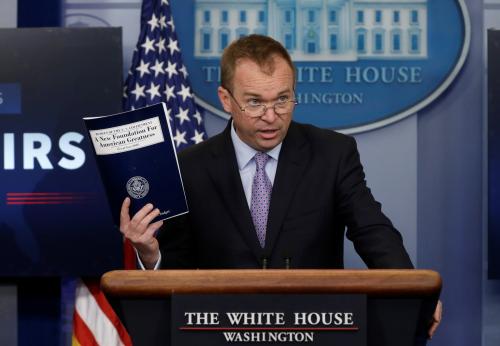
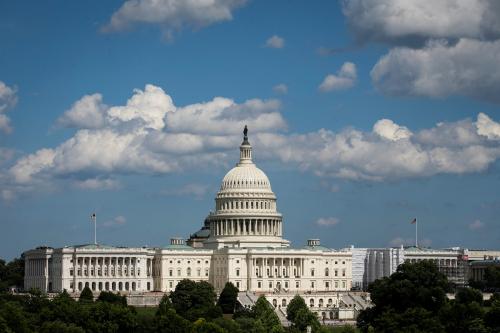

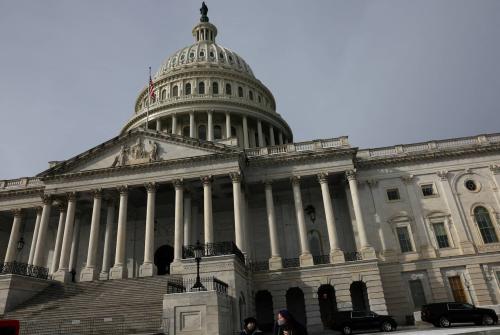
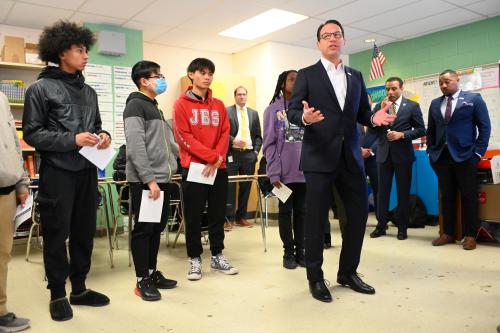
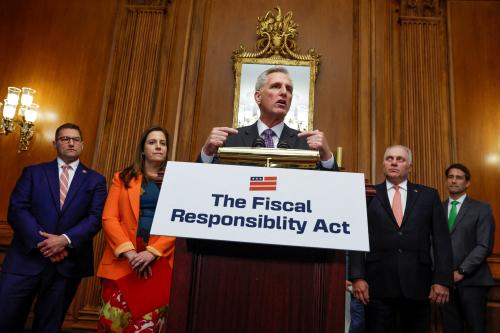
Commentary
Four key points on Trump’s budget proposal
March 16, 2017